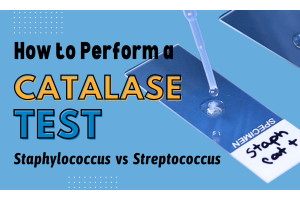Detection of Landmines Using Bacteria

Around the world, more than 100 million landmines lay buried and undetected in over 70 countries. There is a global need for safe and efficient technologies for detecting buried landmines and explosives.
Worldwide, About half a million people are survivors of mine inflicted injuries and an additional 15,000 to 20,000 people are injured or killed by undetected landmines each year.
Detection of these land mines remains a difficult and dangerous task but Israeli researchers may have found a solution using live bacteria that fluoresce when exposed to byproducts that explosives emit over time.
Current methods to detect and remove landmines include X-rays, metal detectors, mechanical cleaning equipment, and even trained animals. These methods have gone unchanged, for the most part, over the past 75 years. They put people or animals in close proximity to potential landmines which puts them at risk.
Some newer methods under development include advanced electromagnetic methods, nuclear detection, acoustic detection, drones, and a variety of biological detection methods including honey bees and plants.
At Israel’s Hebrew University, scientists have been able to detect landmines using genetically engineered bacteria and a laser-based scanner. This method eliminates the need to put people or animals in harm’s way. Further, the technology can be applied to detect a variety of contaminants in different settings.
The technology being studied was first discovered in the late 1990s at the Oak Ridge National Laboratory in Tennessee. It is based on the observation that residues emitted by explosives over time can accumulate in the surrounding soil. Landmines usually contain TNT which gives off a degradation product, DNT. DNT is used as the chemical signal for the presence of explosives in general, and landmines in particular due to the fact that DNT is more volatile than TNT.
The bacterial TNT sensor strain contains a plasmid-borne reporter in which the DNT/TNT inducible yqjF gene promoter is fused to the green fluorescent protein gene gfpmut2. When these molecularly engineered Escherichia coli strains come into contact with DNTvapors, a fluorescent signal is emitted that can be recorded and quantified from a remote location using a laser-based optoelectronic system, allowing for mapping of the location of the landmines.
Researchers ran a small-scale field trial using a combination of the biosensor and remote detection technologies. After preparing their experimental site, biosensor cells encapsulated in polymeric beads were scattered across the surface of the test fields in which real antipersonnel landmines were buried.
The target area was scanned from a distance of 20 meters at a speed of 18 cm/sec. The scanning system was able to identify 13 out of 18 samples, regardless of sand type, the nature of the explosive material, or its packaging. Of the five undetected samples, one was the explosive-free control, and the other four were buried in garden soil only 5 days before the test. The short burial time or the nature of the heavier organic content in the garden soil could be reasons for the failure of detection.
Further field trials are needed to supplement this initial trial. It is important to test diverse types of landmines buried for variable periods at different depths and varying soil types. Additionally, larger areas need to be tested in realistic conditions including different types of weather and terrain.
Concerns with this method that need to be addressed include how to remove engineered bacteria after use, the transfer of foreign genes to local soil bacteria, how to decrease the detection thresholds and response times, and how to optimize biosensor strains and cell encapsulation matrices for use in different climactic conditions.
Initially, the results prove promising and demonstrate the first functional standoff landmine detection system. As Professor Shimshon Belkin, from the Hebrew University’s Alexander Silberman Institute of the Life Sciences states, this technology could be applied to future landmine detection once scanning speeds are improved in order to cover larger areas and once the apparatus is made more compact to be able to use onboard a light unmanned aircraft or drone.

Living biosensors are being considered for other environmental applications as well. Swiss scientists on a research vessel in the North Sea were able to diagnose and characterize the early aftermath of an oil spill using engineered bacteria similar to the bacteria used in the landmine study.
Sensor bacteria have shown to give faster and cheaper results than traditional chemical tests do. The oil spill research group have also developed and tested a bacterial strain that detects arsenic in rice. Other applications could include testing for pollutants in soil and groundwater, and for antibiotics in meat and milk.
Research and development is still needed, but we are seeing scientists start to pave the way for use of bacteria in contamination and pollution detection, as well as the detection of deadly landmines.
 Written by Alani Barajas, Supervisor of Research and Development at Hardy Diagnostics
Written by Alani Barajas, Supervisor of Research and Development at Hardy Diagnostics






